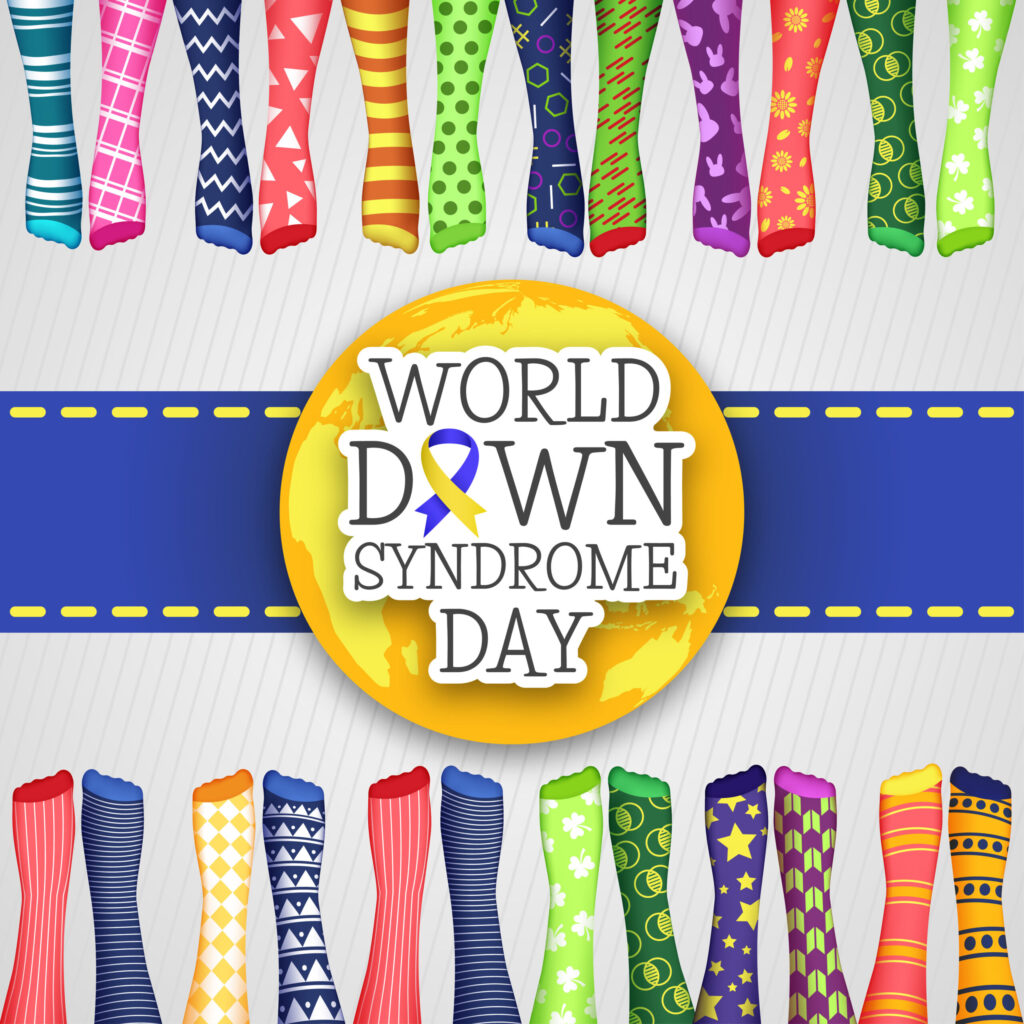March 21st (3/21) is World Down Syndrome Day as Down Syndrome is caused by 3 copies of chromosome 21! To spread awareness, here are 21 facts about Down Syndrome!
- Down Syndrome is the most frequent chromosomal disorder. It occurs in approximately 1 in 700 births.
- Typical characteristics of Down Syndrome are developmental delays, low muscle tone, almond shaped eyes, flat nasal bridge, short neck, a single palmar crease, small ears, small chin, small feet/hands with short fingers, and shorter height.
- The average life expectancy of an individual with Down Syndrome today is 60. In the 1960s, it was 10 years.
- The colors for Down Syndrome awareness are blue and yellow.
- Individuals with Down Syndrome sometimes have other health problems including hearing loss, obstructive sleep apnea, ear infections, eye issues, heart defects, thyroid conditions and other medical problems.
- Down Syndrome is a lifelong condition, but many individuals with Down Syndrome grow up to have jobs, live independently and enjoy various recreational activities.
- There are 3 types of Down Syndrome: Trisomy 21/Nondisjunction (most common), Translocation (3%), and Mosaic (2%)
- October is Down Syndrome Awareness Month.
- Down Syndrome is named after John Langdon Down, a British doctor who first published a clinical description in 1866.
- Although Down Syndrome was first described in 1866, the chromosomal cause was not identified until 1959.
- The incidence of Down Syndrome increases with maternal age over 35 years.
- Down Syndrome is not considered hereditary, since only 1% of cases show the condition passing from parent to child.
- Medical care for children with Down Syndrome between birth and four years of age costs 12 times more than medical care for unaffected children.
- Women who have had one child with Down Syndrome have an increased chance of having another child with Down Syndrome.
- Down Syndrome causes mild to moderate intellectual disability and is the most common cause of intellectual disability.
- Down Syndrome was initially referred to as “mongolism” until Down Syndrome became the official name in the 1970s.
- Approximately 50% of babies born with Down Syndrome have a congenital heart defect.
- Children with Down Syndrome typically meet their gross motor milestones later than unaffected children. For example, only 8% of children with Down Syndrome are able to sit independently by 6 months of age. 53% are able to crawl on hands and knees for at least 6 feet at 24 months of age.
- Other resources about Down Syndrome include The National Down Syndrome Society and the National Association for Down Syndrome.

